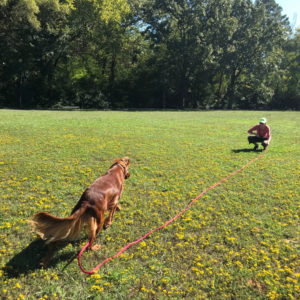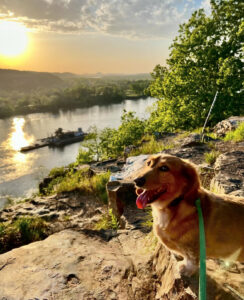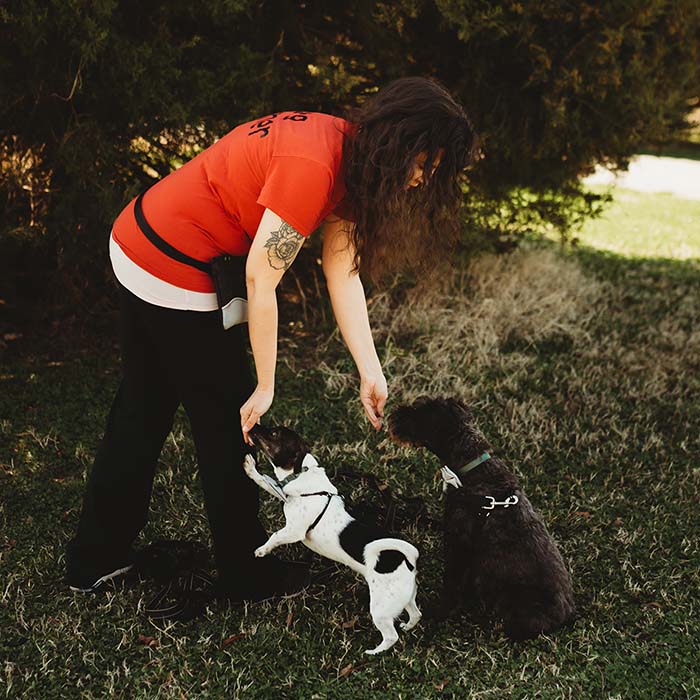It can be hard to know when it’s time to advance a cue or build on behavior modification.
Rosie’s reactivity arrived swiftly last year. One minute she was fine, a cautious, sweet dog, the next she was throwing herself with full force at the front window when my neighbor had the audacity of a guest walking up her pathway.
Then the fence fighting started with the neighbor’s Yorkie.
Then the frenetic barking at visitors in the home, including members of my family, and I struggled with understanding what sort of dog I had taken into my home.
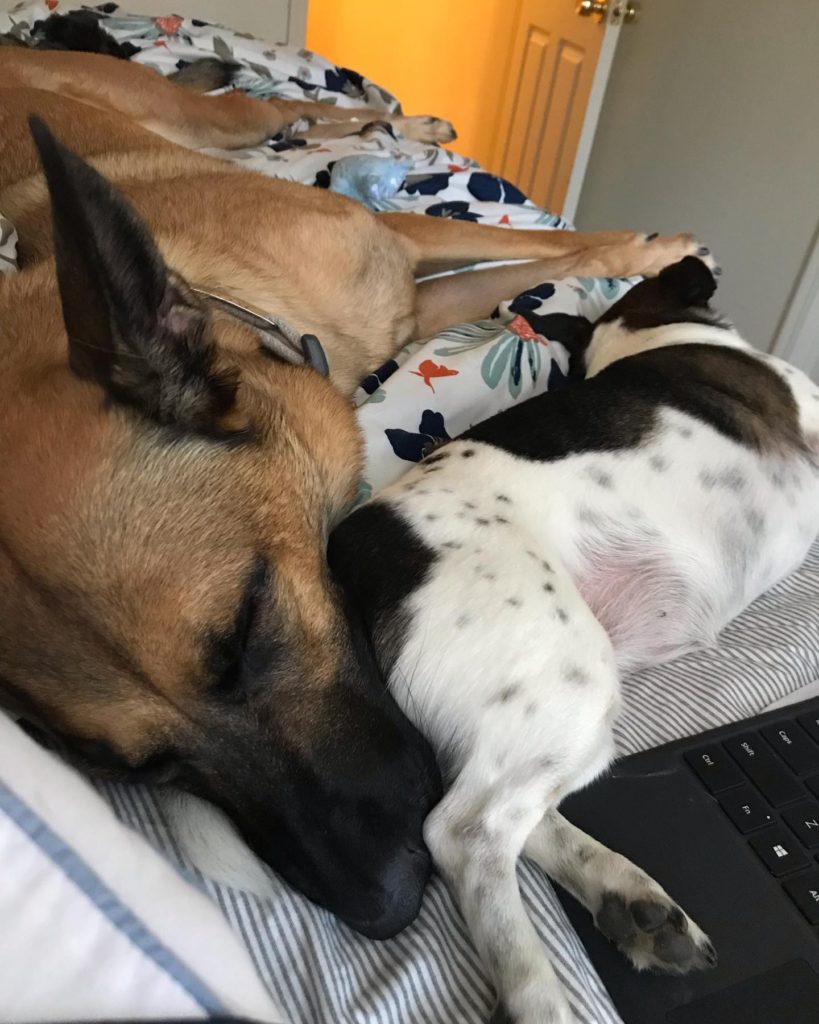
I had known she wasn’t going to be easy, but I also hadn’t been able to fully prepare because I just didn’t know. She had no history, she was either dumped or owner-surrendered, the rescue didn’t have information beyond that. She had had at least one litter of puppies and she was nervous, but that was all that I could verify.
I decided if she was good with my little dogs and she liked to play, we could figure it out. The first time I met her, she immediately grabbed a toy and settled next to me on the rescue’s couch to chew it. She passed several meet and greets with little dogs. I took her home.
If I moved too fast or raised my hands at all, she would get nervous. She used barking—loud barking—as her only method of communication, and I wasn’t always sure what she wanted.
We started to figure it out and walks transitioned from stressful to enjoyable.
But I wasn’t sure how she’d do with other dogs. She loved Lexi, although they have disagreements sometimes, and she mostly ignored Jeeves.
A friend asked me to bring all three over, and I stalled. I wanted to do muzzle training first. There was something that I just wasn’t sure about. I knew my friends’ dogs were perfect, and I just didn’t know what was up with Rosie. Did she like other dogs? Only my two little dogs now? Did she need a gradual introduction process? Had she determined that me, Lexi, and Jeeves were her family now, and it was us against the world?
I found a new trainer in the area offering group classes and reached out, but saw that training collars might be required, and there was just no way I was using any on this nervous dog or any dog at all. When I asked, I was told they weren’t optional if the trainer deemed them necessary. So we kept looking.
I learned the neighbor’s Yorkie was the one starting the fights. She hated other female dogs.
That made sense. Maybe it wasn’t Rosie.
I helped another neighbor bring home a rescue puppy, and one route we took was behind their house, where the puppy became a large teen dog with no understanding of other dogs’ body language. He is sweet, but just wants to play, regardless of how the other dog feels.
He learned fast to sit when he saw us and sit back from the fence. I worked Rosie around him and soon saw a low, slow tail from her. She was interested in him. I knew she could play hard and I knew their play styles would be well-matched.
After two weeks of good interactions, I asked my neighbor if they could meet. She was in their yard first, sniffing, then they came out, and she vocalized and charged. I grabbed her and we managed to get the excited teen dog away. I wasn’t sure what she would do if I let her go, and I didn’t like her stiff body or hard stare, so we stopped.
The next day, outside their yard, separated by a fence, she again showed calm curiosity towards the other dog. Maybe it had just been too soon.
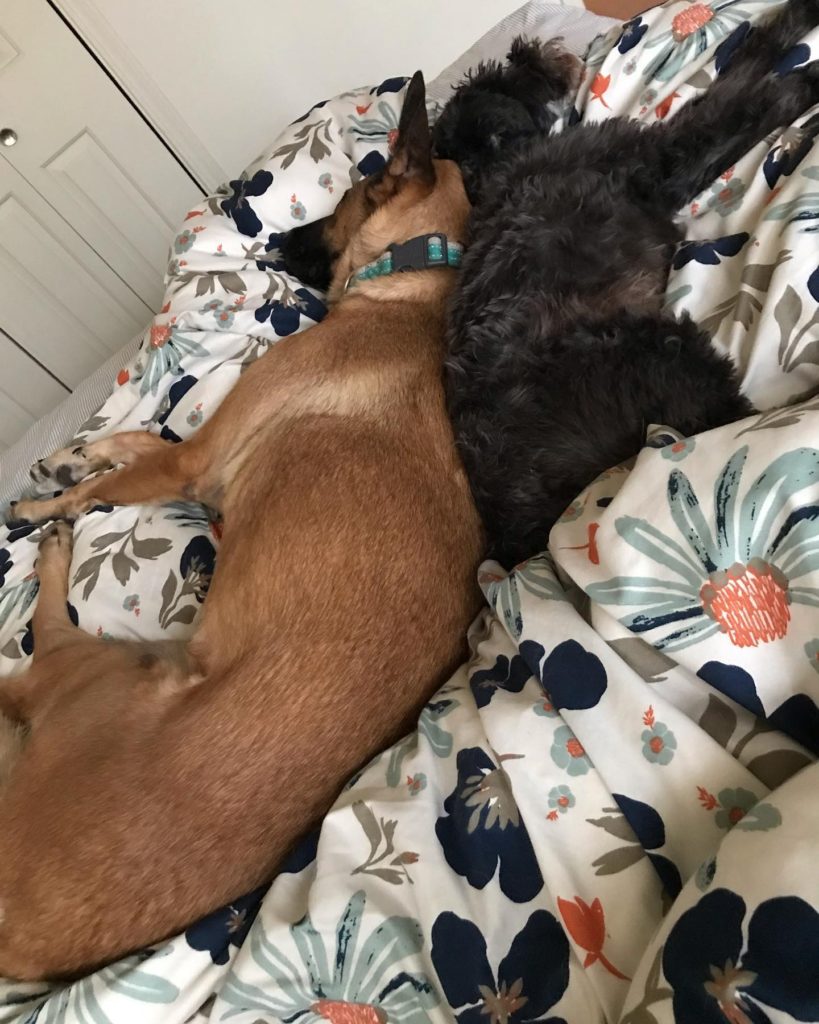
Maybe I’d missed something.
It’s a sense of frustration I know my clients can feel, too, as they’re learning. When they’re too close, like I am with Rosie, to the problem they’re working through.
I was guilty of hyperbole in classes during the previous round when I told my students to NEVER advance distance and duration at the same time when working on stay. One sheepishly came up to me after class and admitted she’d been advancing both with her dog, and I realized I’d made an error.
There’s nothing wrong with building up duration and distance at the same time. But sometimes dogs struggle, and it’s not always easy to see where the mishap occurred. It’s easier for folks just learning how to train their dogs to focus on one thing at a time, to better see where their dog is struggling and to rebuild from there. It’s easier to get seven seconds in-between a reinforcer for stay than it is to break eye contact and take a half turn away. The small steps can move quickly, but we often have to hit them carefully so our dogs understand.
Rosie understood that good things happen outside the fence with the neighbor’s dog, but maybe she needed more time, or she needed some time in the fence with the other dog on leash, with good things happening in a new situation.
We’ll figure it out. Just like we always have.
Sometimes, training and working on things just take time.

I was reminded of that when Lexi and I started agility classes. Our instructor broke down the cues and behaviors needed to run a course, and we worked on the fundamentals for four weeks in a foundations course. Lexi went from cautious and unsure to enthusiastically throwing herself on obstacles, even wobbly ones, because of all that time and work we put in. She adores the instructor and she loves agility.
If I had quit after the first class, I never would have had a chance to see her thrive as a little ten-pound dog surrounded by dogs ten times her size and having more fun than anyone else combined. I had been determined to make our time in class as fun as possible, no matter what, and it paid off in a big way.
And if I quit on Rosie, and make her world too small, I won’t be able to see what she is capable of and what we can do together, as we take the steps to work on her reactivity, which has come so far already. (This was true for us and our situation. Sometimes rehoming is the best option. Here’s what to consider.)
Walks are enjoyable now, but early on, I, being so close to the problem, couldn’t see for myself what I work on with clients all of the time.
So, as you’re surviving the ice storm in Arkansas, and working on training, consider the distance, duration, distraction, difficulty aspects of training. Try “sit” in a different room than you normally train, or toss a treat to practice recall. Try advancing duration while working on distance for “stay” and see if you can recognize where you need to adjust. Take a step back if you need to. The power of positive reinforcement and management is that mistakes happen, but we can try again.

